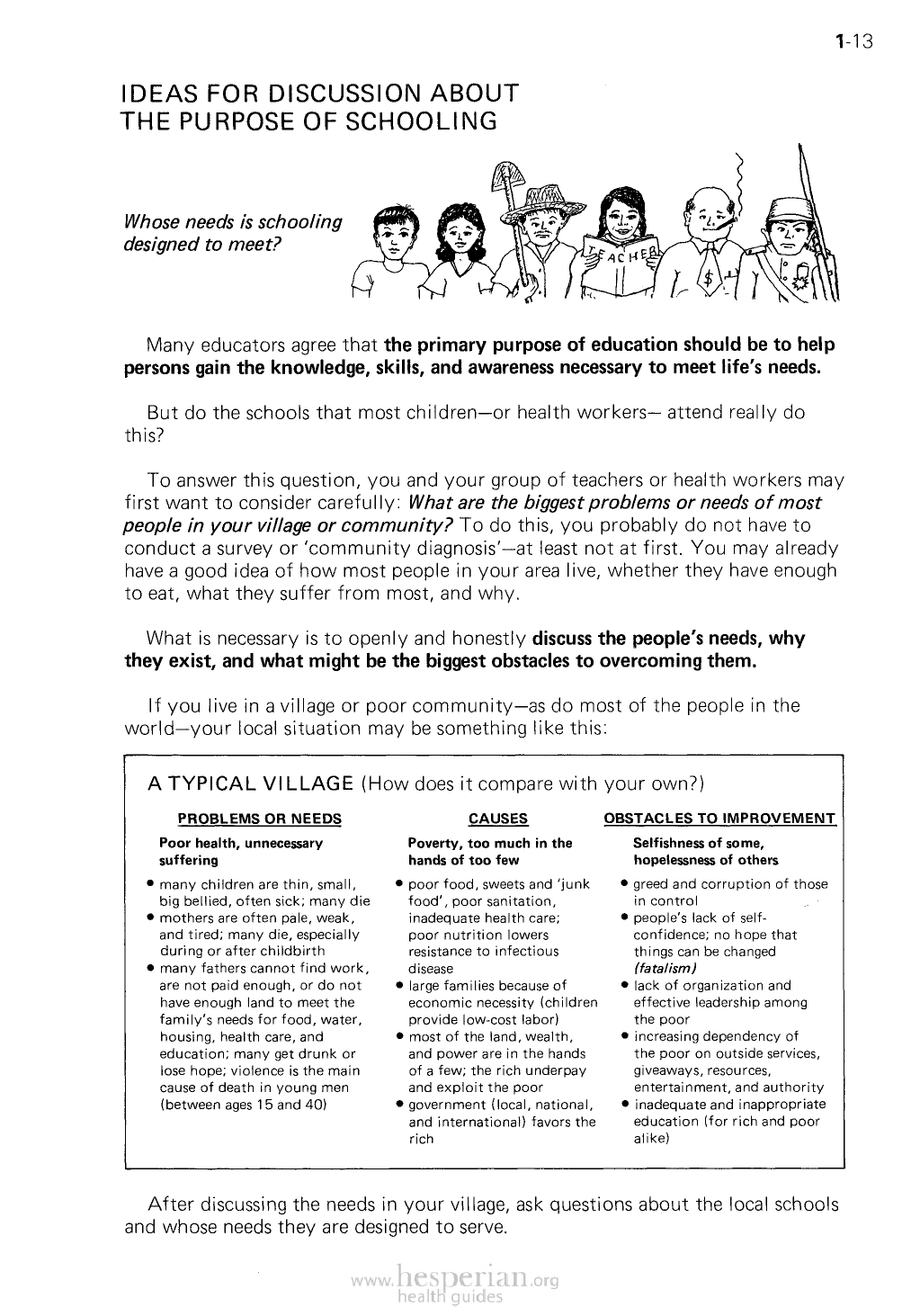
IDEAS FOR DISCUSSION ABOUT
THE PURPOSE OF SCHOOLING
1-13
Whose needs is schooling
designed to meet?
Many educators agree that the primary purpose of education should be to help
persons gain the knowledge, skills, and awareness necessary to meet life’s
needs.
But do the schools that most children—or health workers— attend really do
this?
To answer this question, you and your group of teachers or health workers may first
want to consider carefully: What are the biggest problems or needs of most people
in your village or community? To do this, you probably do not have to conduct a
survey or ‘community diagnosis’—at least not at first. You may already have a good
idea of how most people in your area live, whether they have enough to eat, what they
suffer from most, and why.
What is necessary is to openly and honestly discuss the people’s needs, why
they exist, and what might be the biggest obstacles to overcoming them.
If you live in a village or poor community—as do most of the people in the world-
your local situation may be something like this:
A TYPICAL VILLAGE (How does it compare with your own?)
PROBLEMS OR NEEDS
Poor health, unnecessary
suffering
• many children are thin, small, big
bellied, often sick; many die
• mothers are often pale, weak,
and tired; many die, especially
during or after childbirth
• many fathers cannot find work,
are not paid enough, or do
not have enough land to meet
the family’s needs for food,
water, housing, health care, and
education; many get drunk or
lose hope; violence is the main
cause of death in young men
(between ages 15 and 40)
CAUSES
OBSTACLES TO IMPROVEMENT
Poverty, too much in the
hands of too few
• poor food, sweets and
‘junk food’, poor sanitation,
inadequate health care;
poor nutrition lowers
resistance to infectious
disease
• large families because of
economic necessity (children
provide low-cost labor)
• most of the land, wealth, and
power are in the hands of a
few; the rich underpay and
exploit the poor
• government (local, national,
and international) favors the
rich
Selfishness of some,
hopelessness of others
• greed and corruption of those in
control
• people’s lack of self-
confidence; no hope that
things can be changed
(fatalism)
• lack of organization and effective
leadership among the poor
• increasing dependency of
the poor on outside services,
giveaways, resources,
entertainment, and authority
• inadequate and inappropriate
education (for rich and poor
alike)
After discussing the needs in your village, ask questions about the local schools and
whose needs they are designed to serve.